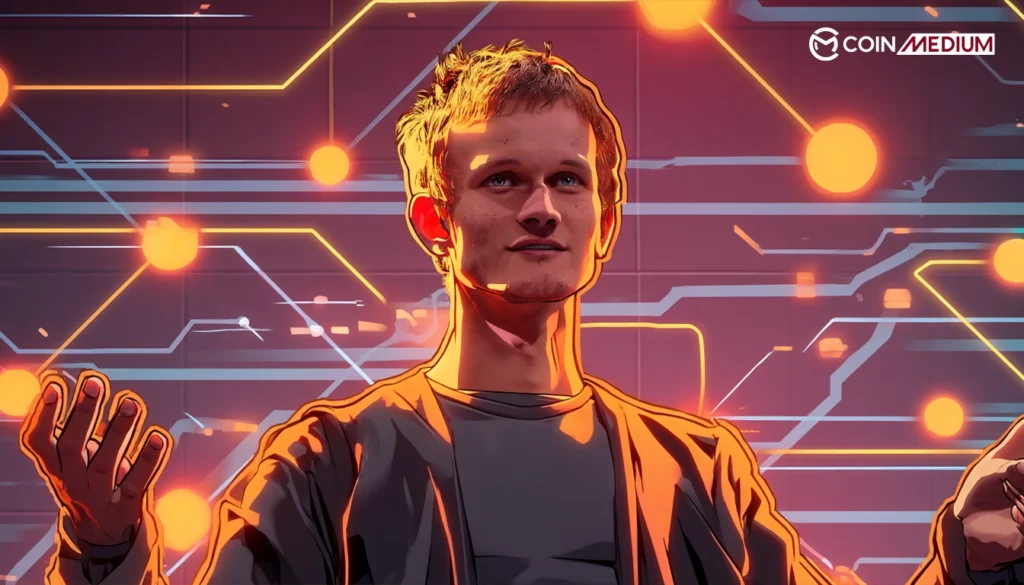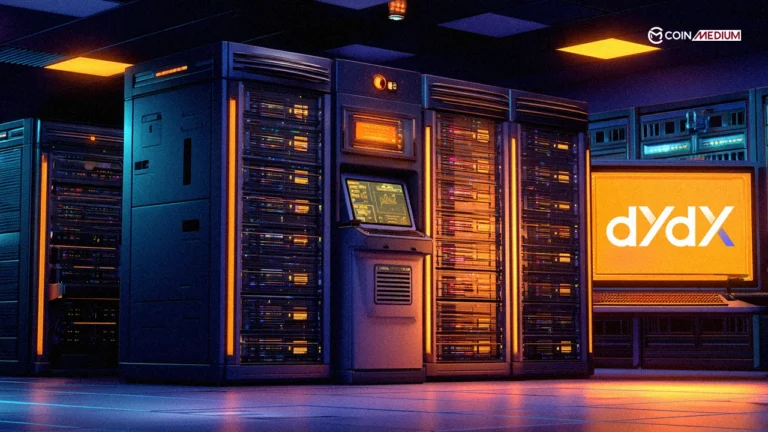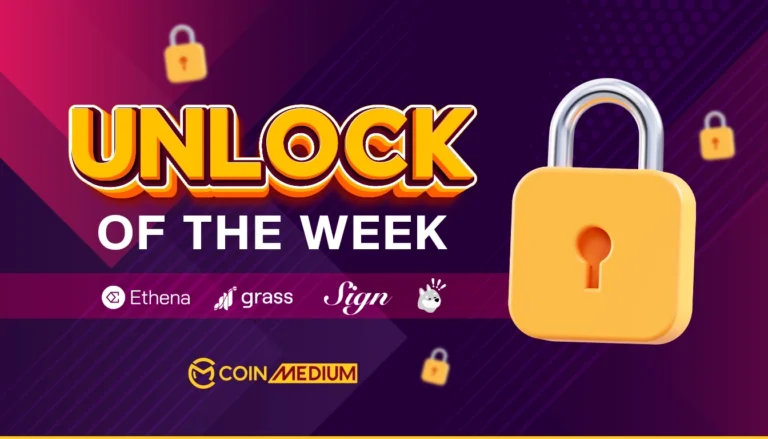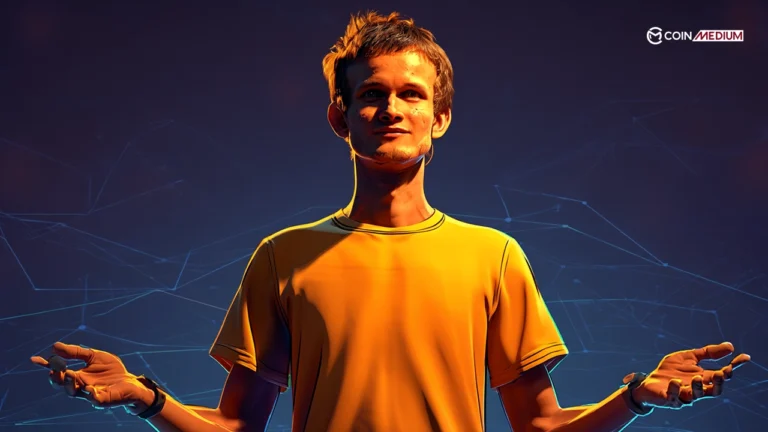Judging by the looks of it, Ethereum co-founder Vitalik Buterin is a huge fan of the “less is more” concept as he calls on blockchain developers to adopt a minimalist approach when building layer-2 (L2) networks.
He stresses simplicity, efficiency, and deep integration with Ethereum’s foundational infrastructure.
Buterin’s comments were shared on July 17 on social media network X, following a debate sparked by an Ethereum Foundation researcher Jason Chaskin who proposed that many existing layer-1 (L1) blockchains will increasingly find relevance by transitioning into Ethereum-based L2s.
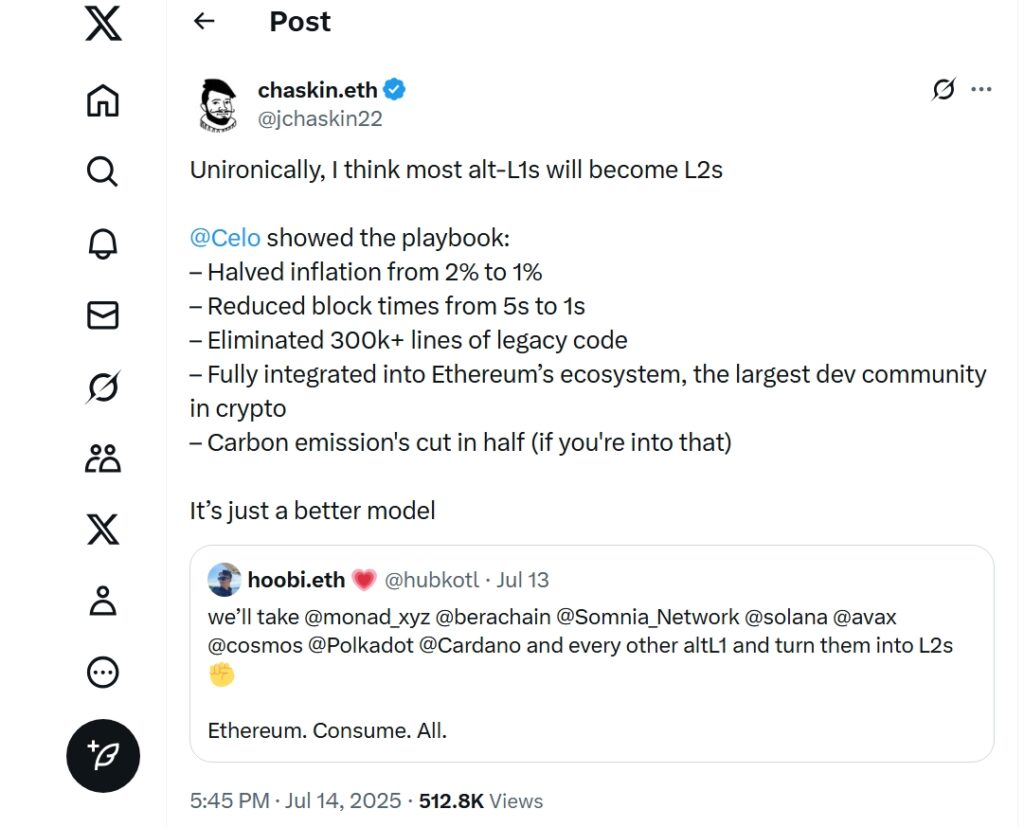
Chaskin argued that Celo’s decision to become an L2 brought several benefits like reduced inflation, improved code simplicity, faster block finality, and access to Ethereum’s extensive developer ecosystem.
Buterin echoed Chaskin’s perspective and proposed a framework for how L2s should be built.
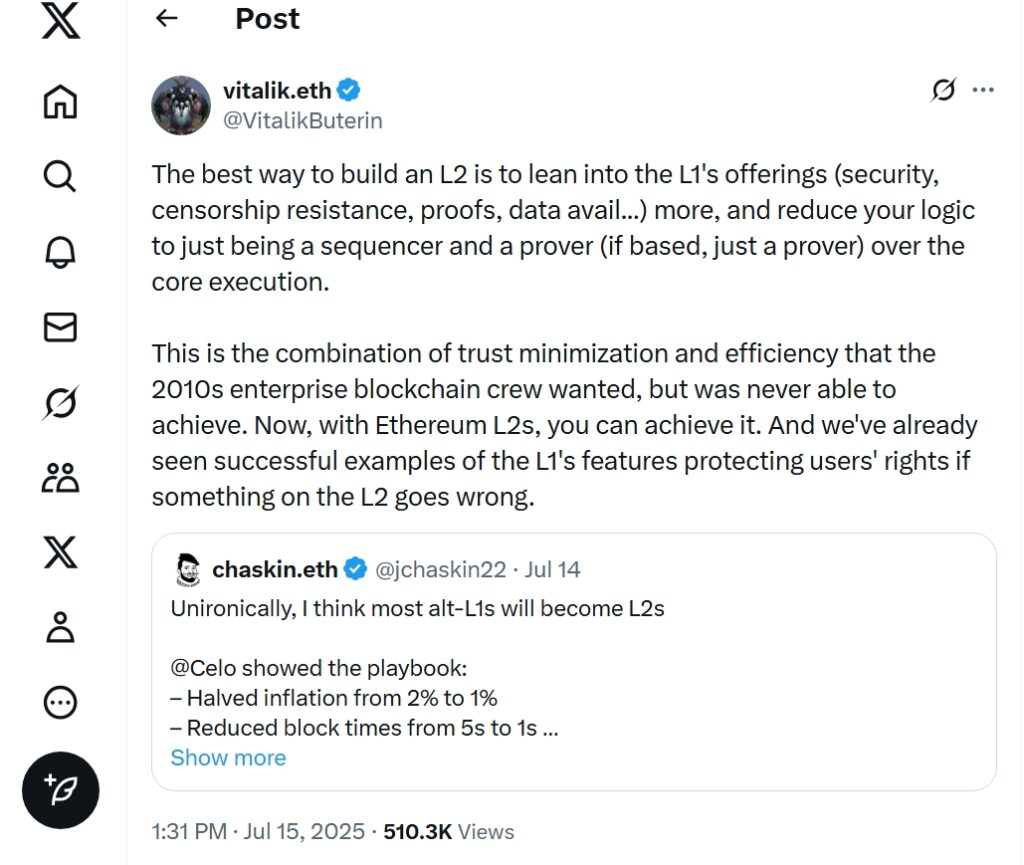
Buterin is of the opinion that instead of replicating the complex architecture of L1 chains, developers should sit back and leverage Ethereum’s robust base layer for critical functions such as security, data availability, and censorship resistance.
He went on to elaborate that L2 networks should limit their on-chain logic to two core components: a sequencer, which determines the order of transactions, and a prover, which produces cryptographic proofs to verify those transactions.
This minimalist structure, he said, achieves the longstanding goals of trust minimization and operational efficiency that earlier enterprise blockchain initiatives failed to deliver.
“Now, with Ethereum L2s, you can achieve it,” Buterin wrote.
“And we’ve already seen successful examples of the L1’s features protecting users’ rights if something on the L2 goes wrong.”
The growing alignment between Buterin and Chaskin testifies to a larger shift in blockchain strategy.
As Ethereum’s ecosystem matures and scales, more developers and projects may find it advantageous to build on Ethereum rather than compete with it.
Ethereum’s roadmap to zkEVM integration
Meanwhile in June Buterin announced that Ethereum mainnet is on track for a significant scalability upgrade over the next 12 months.
In July Ethereum Foundation unveiled a plan to integrate a zero-knowledge Ethereum Virtual Machine (zkEVM) into the Ethereum mainnet within a year, allowing validators to verify transactions more efficiently without re-executing every block.
Therefore when you read between the lines of Buterin’s remarks and Ethereum’s zkEVM roadmap, the vision is clear: a modular, scalable ecosystem where the base layer provides trust and security, while flexible, minimalist L2s enable innovation and experimentation.



